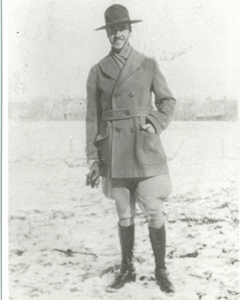Colonel
Amgelo R. Del Campo Jr.
 Colonel Angelo Del
Campo, Jr. was born in Chicago in 1908, the fifth of six children of an immigrant saloon keeper. He was
admitted to the United States Military Academy in 1927, and in the interim, before reporting to West Point,
worked as a money courier for the Chicago banks during the height of the great gang wars.
Colonel Angelo Del
Campo, Jr. was born in Chicago in 1908, the fifth of six children of an immigrant saloon keeper. He was
admitted to the United States Military Academy in 1927, and in the interim, before reporting to West Point,
worked as a money courier for the Chicago banks during the height of the great gang wars.
Assigned to the cavalry upon graduating in 1931, he was assigned to the Ordnance Corps in 1938 and made a branch transfer in 1941.
From 1943 to 1945, following his graduation from the Command and General Staff College at Ft. Leavenworth, he served as Chief of Military Ground mission to Equador. He played a crucial role in preventing a coup against the Equadorian government, and was awarded the Abdon Calderon Award, First Class, by the President of that country.
He completed a Master of Science in Nuclear Physics at the Massachusetts Institute of Technology in 1948 and then undertook development of the atomic artillery round, a concept he had proposed in the interests of limiting nuclear devastation in future wars to military targets. He spearheaded the integration of the 280mm shell in the Army arsenal by 1953 with the assistance of Robert Schwartz, an able young engineer. Following his graduation from the Industrial College of the Armed Forces in 1953, he was named Director of the Ballistics Research Laboratory at Aberdeen Proving Ground.
Retiring from the Army in 1956, he directed the Atoms for Peace Project for Westinghouse Electric 1961. During this period, he built the first water-cooled European thermal reactor in Belgium. From 1961 to 1971, he conducted top secret projects for the Pentagon while working for the MITRE Corporation in Massachusetts. Colonel Del Campo retired in 1971 and died in 1983.